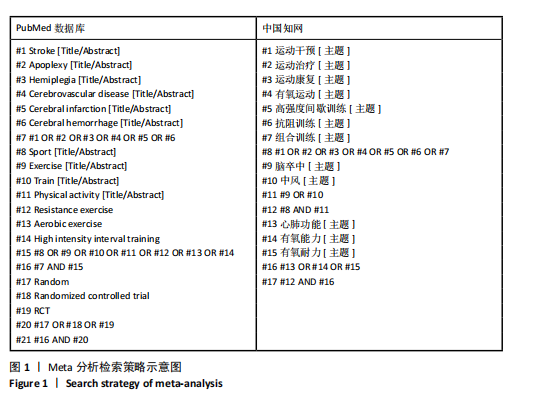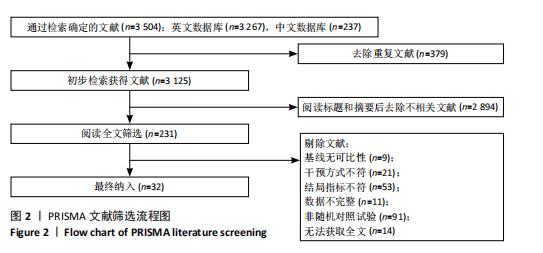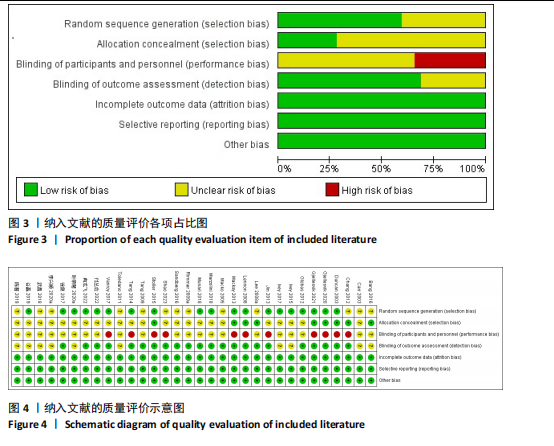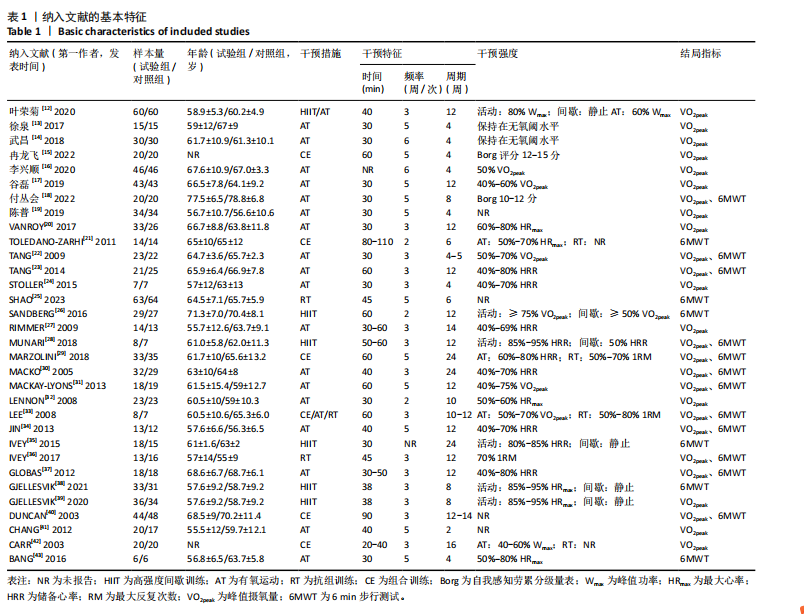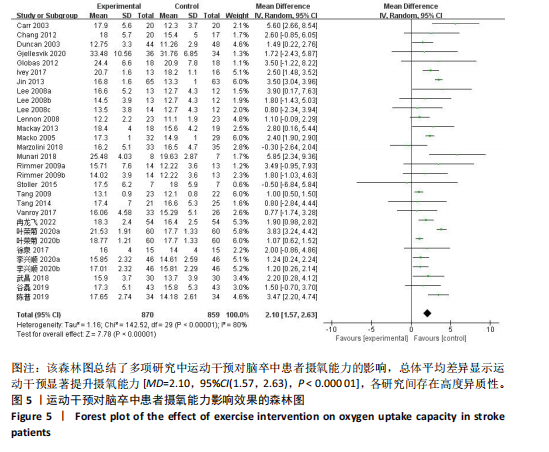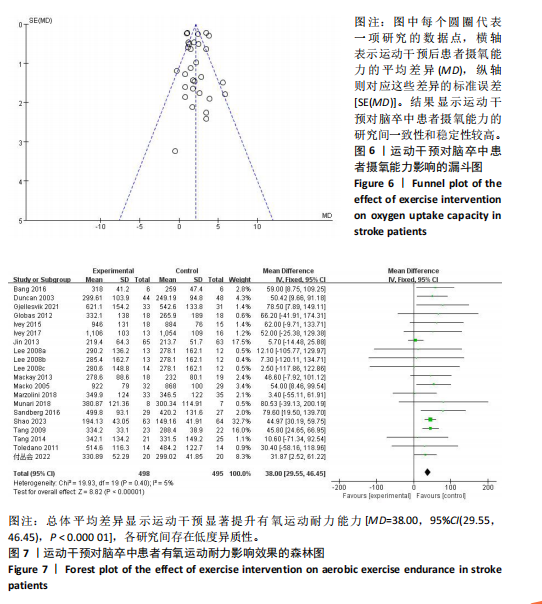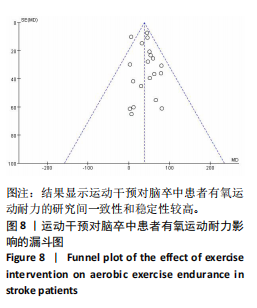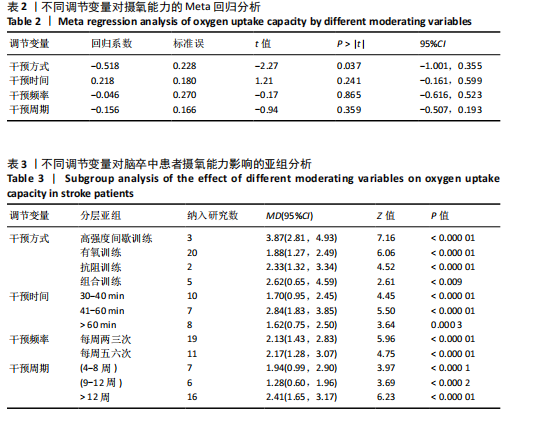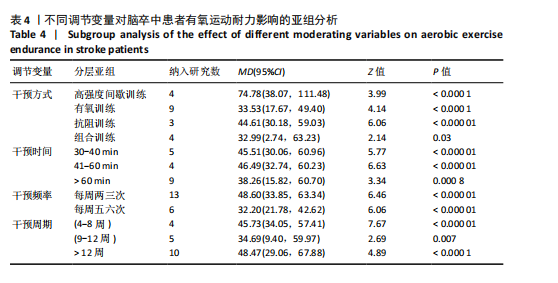[1] SACCO RL, KASNER SE, BRODERICK JP, et al. An updated definition of stroke for the 21st century: a statement for healthcare professionals from the American Heart Association/American Stroke Association. Stroke. 2013;44(7):2064-2089.
[2] LINDSAY MP, NORRVING B, SACCO RL, et al. World Stroke Organization (WSO): Global Stroke Fact Sheet 2019. Int J Stroke. 2019;14(8):806-817.
[3] SMITH AC, SAUNDERS DH, MEAD G. Cardiorespiratory fitness after stroke: a systematic review. Int J Stroke. 2012;7(6): 499-510.
[4] PASE MP, BEISER A, ENSERRO D, et al. Association of Ideal Cardiovascular Health With Vascular Brain Injury and Incident Dementia. Stroke. 2016;47(5):1201-1206.
[5] SUTBEYAZ ST, KOSEOGLU F, INAN L, et al. Respiratory muscle training improves cardiopulmonary function and exercise tolerance in subjects with subacute stroke: a randomized controlled trial. Clin Rehabil. 2010;24(3):240-250.
[6] KIM J, PARK JH, YIM J. Effects of respiratory muscle and endurance training using an individualized training device on the pulmonary function and exercise capacity in stroke patients. Med Sci Monit. 2014;20: 2543-2549.
[7] WANG C, XU Y, ZHANG L, et al. Comparative efficacy of different exercise methods to improve cardiopulmonary function in stroke patients: a network meta-analysis of randomized controlled trials. Front Neurol. 2024;15:1288032.
[8] LV W, WANG X, LIU J, et al. Eight-Section Brocade Exercises Improve the Sleep Quality and Memory Consolidation and Cardiopulmonary Function of Older Adults With Atrial Fibrillation-Associated Stroke. Front Psychol. 2019;10:2348.
[9] STOLLER O, DE BRUIN ED, KNOLS RH, et al. Effects of cardiovascular exercise early after stroke: systematic review and meta-analysis. BMC Neurol. 2012;12:45.
[10] HIGGINS JPT, THOMPSON SG, DEEKS JJ, et al. Measuring inconsistency in meta-analyses. BMJ. 2003;327(7414):557-560.
[11] 王丹, 翟俊霞, 牟振云, 等. Meta分析中的异质性及其处理方法[J]. 中国循证医学杂志,2009,9(10):1115-1118.
[12] 叶荣菊, 孙乐山, 张琴, 等. 有氧运动强度对脑卒中合并冠心病患者心功能及运动耐力的影响[J]. 心血管康复医学杂志, 2020,29(5):536-540.
[13] 徐泉, 潘钰, 杨晓辉, 等. 有氧运动联合常规康复治疗对卒中偏瘫患者心肺运动功能及康复效果的影响[J]. 中国脑血管病杂志,2017,14(9):465-469.
[14] 武昌, 秦小虎, 田智. 有氧运动联合常规康复治疗对卒中偏瘫患者心肺运动功能及康复效果的影响[J]. 临床医药文献电子杂志,2018,5(24):32-33.
[15] 冉龙飞, 聂志强, 郭军辉, 等. 等速肌力训练联合有氧运动对脑卒中患者心肺功能及下肢运动功能的影响[J]. 中国疗养医学,2022,31(12):1298-1302.
[16] 李兴顺. 定量评估有氧训练对老年脑卒中偏瘫患者心肺功能和身体恢复指标的影响[J]. 白求恩医学杂志,2020,18(4): 352-354.
[17] 谷磊, 武亮, 孙兴国. 定量评估有氧训练对老年脑卒中偏瘫病人心肺功能的影响[J]. 实用老年医学,2019,3(2):149-152.
[18] 付丛会, 陈梅, 李小通, 等. 抗阻训练对卒中慢性期患者呼吸功能、运动耐力及负性情绪的影响[J]. 中国卒中杂志,2022, 17(6):573-578+572.
[19] 陈普. 有氧运动+常规康复治疗对卒中偏瘫患者心肺功能及康复效果的影响评价[J]. 按摩与康复医学,2019,10(3):15-16.
[20] VANROY C, FEYS H, SWINNEN A, et al. Effectiveness of Active Cycling in Subacute Stroke Rehabilitation: A Randomized Controlled Trial. Arch Phys Med Rehabil. 2017;98(8):1576-1585.e5.
[21] TOLEDANO-ZARHI A, TANNE D, CARMELI E, et al. Feasibility, safety and efficacy of an early aerobic rehabilitation program for patients after minor ischemic stroke: A pilot randomized controlled trial. NeuroRehabilitation. 2011;28(2):85-90.
[22] TANG A, SIBLEY KM, THOMAS SG, et al. Effects of an Aerobic Exercise Program on Aerobic Capacity, Spatiotemporal Gait Parameters, and Functional Capacity in Subacute Stroke. Neurorehabil Neural Repair. 2009;23(4):398-406.
[23] TANG A, ENG JJ, KRASSIOUKOV AV, et al. Exercise-induced changes in cardiovascular function after stroke: a randomized controlled trial. I Int J Stroke. 2014;9(7): 883-889.
[24] STOLLER O, DE BRUIN ED, SCHINDELHOLZ M, et al. Efficacy of Feedback-Controlled Robotics-Assisted Treadmill Exercise to Improve Cardiovascular Fitness Early After Stroke: A Randomized Controlled Pilot Trial. J Neurol Phys Ther. 2015;39(3):156-165.
[25] SHAO C, WANG Y, GOU H, et al. Strength Training of the Nonhemiplegic Side Promotes Motor Function Recovery in Patients With Stroke: A Randomized Controlled Trial. Arch Phys Med Rehabil. 2023;104(2):188-194.
[26] SANDBERG K, KLEIST M, FALK L, et al. Effects of Twice-Weekly Intense Aerobic Exercise in Early Subacute Stroke: A Randomized Controlled Trial. Arch Phys Med Rehabil. 2016;97(8):1244-1253.
[27] RIMMER JH, RAUWORTH AE, WANG EC, et al. A Preliminary Study to Examine the Effects of Aerobic and Therapeutic (Nonaerobic) Exercise on Cardiorespiratory Fitness and Coronary Risk Reduction in Stroke Survivors. Arch Phys Med Rehabil. 2009;90(3):407-412.
[28] MUNARI D, PEDRINOLLA A, SMANIA N, et al. High-intensity treadmill training improves gait ability, VO2peak and cost of walking in stroke survivors: preliminary results of a pilot randomized controlled trial. Eur J Phys Rehabil Med. 2018;54(3):408-418.
[29] MARZOLINI S, BROOKS D, OH P, et al. Aerobic With Resistance Training or Aerobic Training Alone Poststroke: A Secondary Analysis From a Randomized Clinical Trial. Neurorehabil Neural Repair. 2018;32(3): 209-222.
[30] MACKO RF, IVEY FM, FORRESTER LW, et al. Treadmill Exercise Rehabilitation Improves Ambulatory Function and Cardiovascular Fitness in Patients With Chronic Stroke. Stroke. 2005;36(10):2206-2211.
[31] MACKAY-LYONS M, MCDONALD A, MATHESON J, et al. Dual Effects of Body-Weight Supported Treadmill Training on Cardiovascular Fitness and Walking Ability Early After Stroke: A Randomized Controlled Trial. Neurorehabil Neural Repair. 2013; 27(7):644-653.
[32] LENNON O, CAREY A, GAFFNEY N, et al. A pilot randomized controlled trial to evaluate the benefit of the cardiac rehabilitation paradigm for the non-acute ischaemic stroke population. Clin Rehabil. 2008;22(2): 125-133.
[33] LEE MJ, KILBREATH SL, SINGH MF, et al. Comparison of Effect of Aerobic Cycle Training and Progressive Resistance Training on Walking Ability After Stroke: A Randomized Sham Exercise–Controlled Study. J Am Geriatr Soc. 2008;56(6): 976-985.
[34] JIN H, JIANG Y, WEI Q, et al. Effects of aerobic cycling training on cardiovascular fitness and heart rate recovery in patients with chronic stroke. NeuroRehabilitation. 2013;32(2):327-335.
[35] IVEY FM, STOOKEY AD, HAFER-MACKO CE, et al. Higher Treadmill Training Intensity to Address Functional Aerobic Impairment after Stroke. J Stroke Cerebrovasc Dis. 2015; 24(11):2539-2546.
[36] IVEY FM, PRIOR SJ, HAFER-MACKO CE, et al. Strength Training for Skeletal Muscle Endurance after Stroke. J Stroke Cerebrovasc Dis. 2017;26(4):787-794.
[37] GLOBAS C, BECKER C, CERNY J, et al. Chronic stroke survivors benefit from high-intensity aerobic treadmill exercise: a randomized control trial. Neurorehabil Neural Repair. 2012;26(1):85-95.
[38] GJELLESVIK TI, BECKER F, TJØNNA AE, et al. Effects of High-Intensity Interval Training After Stroke (The HIIT Stroke Study) on Physical and Cognitive Function: A Multicenter Randomized Controlled Trial. Arch Phys Med Rehabil. 2021;102(9):1683-1691.
[39] GJELLESVIK TI, BECKER F, TJØNNA AE, et al. Effects of High-Intensity Interval Training After Stroke (the HIIT-Stroke Study): A Multicenter Randomized Controlled Trial. Arch Phys Med Rehabil. 2020;101(6): 939-947.
[40] DUNCAN P, STUDENSKI S, RICHARDS L, et al. Randomized Clinical Trial of Therapeutic Exercise in Subacute Stroke. Stroke. 2003; 34(9):2173-2180.
[41] CHANG WH, KIM MS, HUH JP, et al. Effects of Robot-Assisted Gait Training on Cardiopulmonary Fitness in Subacute Stroke Patients: A Randomized Controlled Study. Neurorehabil Neural Repair. 2012;26(4): 318-324.
[42] CARR M, JONES J. Physiological Effects of Exercise on Stroke Svivors. Top Stroke Rehabil. 2003;9(4):57-64.
[43] BANG DH, SON YL. Effect of intensive aerobic exercise on respiratory capacity and walking ability with chronic stroke patients: a randomized controlled pilot trial. J Phys Ther Sci. 2016;28(8):2381-2384.
[44] GIRARD V, BELLAVANCE-TREMBLAY H, GAUDET-DROUIN G, et al. Cardiorespiratory strain during stroke rehabilitation: Are patients trained enough? A systematic review. Ann Phys Rehabil Med. 2021;64(4): 101443.
[45] LOE H, NES BM, WISLØFF U. Predicting VO2peak from Submaximal- and Peak Exercise Models: The HUNT 3 Fitness Study, Norway. PloS One. 2016;11(1):e0144873.
[46] LUO L, MENG H, WANG Z, et al. Effect of high-intensity exercise on cardiorespiratory fitness in stroke survivors: A systematic review and meta-analysis. Ann Phys Rehabil Med. 2020;63(1):59-68.
[47] MONTERO D, DIAZ-CAÑESTRO C, LUNDBY C. Endurance Training and V˙O2max: Role of Maximal Cardiac Output and Oxygen Extraction. Med Sci Sports Exerc. 2015; 47(10):2024-2033.
[48] ROSS R, BLAIR SN, ARENA R, et al. Importance of Assessing Cardiorespiratory Fitness in Clinical Practice: A Case for Fitness as a Clinical Vital Sign: A Scientific Statement From the American Heart Association. Circulation. 2016;134(24):e653-e699.
[49] TOMCZAK CR, THOMPSON RB, PATERSON I, et al. Effect of acute high-intensity interval exercise on postexercise biventricular function in mild heart failure. J Appl Physiol (1985). 2011;110(2):398-406.
[50] FU TC, WANG CH, LIN PS, et al. Aerobic interval training improves oxygen uptake efficiency by enhancing cerebral and muscular hemodynamics in patients with heart failure. Int J Cardiol. 2013;167(1):41-50.
[51] LITTLE JP, GILLEN JB, PERCIVAL ME, et al. Low-volume high-intensity interval training reduces hyperglycemia and increases muscle mitochondrial capacity in patients with type 2 diabetes. J Appl Physiol (1985). 2011;111(6):1554-1560.
[52] GIBALA MJ, MCGEE SL, GARNHAM AP, et al. Brief intense interval exercise activates AMPK and p38 MAPK signaling and increases the expression of PGC-1alpha in human skeletal muscle. J Appl Physiol (1985). 2009;106(3):929-934.
[53] LITTLE JP, SAFDAR A, BISHOP D, et al. An acute bout of high-intensity interval training increases the nuclear abundance of PGC-1α and activates mitochondrial biogenesis in human skeletal muscle. Am J Physiol Regul Integr Comp Physiol. 2011;300(6): R1303-1310.
[54] TAN R, NEDERVEEN JP, GILLEN JB, et al. Skeletal muscle fiber-type-specific changes in markers of capillary and mitochondrial content after low-volume interval training in overweight women. Physiol Rep. 2018;6(5): e13597.
[55] CROZIER J, ROIG M, ENG JJ, et al. High-Intensity Interval Training After Stroke: An Opportunity to Promote Functional Recovery, Cardiovascular Health, and Neuroplasticity. Neurorehabil Neural Repair. 2018;32(6-7):543-556.
[56] 祖秀明. 耐力训练与高强度间歇训练对肥胖儿童健康相关指标的影响[J]. 西南国防医药,2014,24(4):408-411.
[57] CORTE DE ARAUJO AC, ROSCHEL H, PICANÇO AR, et al. Similar health benefits of endurance and high-intensity interval training in obese children. PloS One. 2012; 7(8):e42747.
[58] BIDDLE SJH, BATTERHAM AM. High-intensity interval exercise training for public health: a big HIT or shall we HIT it on the head?. Int J Behav Nutr Phys Act. 2015;12:95.
[59] HERBERT P, GRACE FM, SCULTHORPE NF. Exercising caution: prolonged recovery from a single session of high-intensity interval training in older men. J Am Geriatr Soc. 2015;63(4):817-818.
[60] ROGNMO Ø, MOHOLDT T, BAKKEN H, et al. Cardiovascular risk of high- versus moderate-intensity aerobic exercise in coronary heart disease patients. Circulation. 2012;126(12):1436-1440.
[61] WEWEGE MA, AHN D, YU J, et al. High-Intensity Interval Training for Patients With Cardiovascular Disease-Is It Safe? A Systematic Review. J Am Heart Assoc. 2018; 7(21):e009305. |
